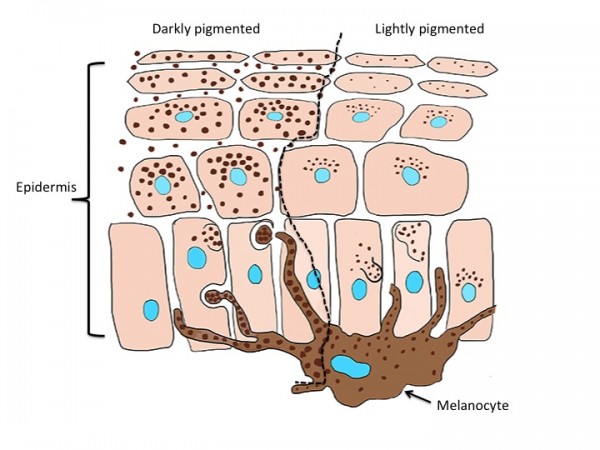We have learned a lot about skin and its permeability barrier in recent years. Here are our picks for the top 5 discoveries about skin of the past decade. Some of these arose from work in our laboratory, and some from research by other investigators.
- 1. Common inflammatory skin diseases, like the eczemas and even psoriasis, begin with an inherited weakness in the skin’s barrier.
This revelation came pretty much as a surprise to everyone in the dermatologic research community – although not to us. Our work on the skin barrier had long before led us to this conclusion. But heretofore most other research into these common disorders had focused on the role of the immune system. The question was – which is the chicken and which the egg? Both the barrier and inflammation were clearly involved in the disease process – but which came first?
It was the work of the new generation of geneticists – who, in their search for the genes that underlay atopic dermatitis, (which have a strong familial bent), discovered that genes of the skin’s barrier system are commonly altered in people who suffer from these disorders.
The pendulum of opinion in regard their causation has not completely swung from the immunological to the barrier, but it certainly is gravitating in that direction. Work in progress includes studies to see whether preventing the development of a defective barrier through the use of barrier repair therapies can also prevent the development of atopic dermatitis and other allergic disorders. Stay tuned here.
- 2. Skin plays host to an amazing diversity of microbes – both good and bad.
In the past, when our knowledge of the skin’s microbial flora depended upon our ability to grow these organisms in the laboratory, we assumed there were only limited numbers of ‘normal’ and ‘disease-causing’ microbes that lived on skin. Now with the advent of RNA-sequencing technology, we have learned that the skin – like the gastrointestinal tract – hosts a large number of micro-organisms.
The role of the skin’s microbiome in health and disease is beginning to be unraveled. Stay tuned for more insights on that front.
- 3. Air pollution provokes skin diseases and accelerates skin aging.
Air pollution has been with us for a long time, and we have long been aware that it is a problem for people with chronic lung conditions, like asthma. But in recent years we have learned that it can also be harmful to pregnant women and their babies, to people with heart disease, and even for those with kidney and psychiatric conditions. The close ties between air pollution and climate change are also now receiving attention.
Just in the past decade we have learned that pollution also is bad for the skin – producing flares of eczemas and acne, and accelerating skin aging. That skin is also affected by air pollution should come as no surprise. Skin after all is bathed in the polluted air that surrounds us. And although skin evolved robust defenses against assault by foreign chemicals, its capabilities are finite and can be overwhelmed. Our knowledge about the effects of air pollution on skin is in its infancy. We predict you will need to stay tuned for more here, too.
- 4. Age-related abnormalities in the skin’s permeability barrier provoke systemic inflammation.
We learned some years ago that the skin’s barrier becomes weaker as we age – a defect that begins by age 50 in most people. It has also been known for some time that many of the common diseases associated with aging – for example, heart disease, Alzheimer’s disease, and osteoarthritis – are associated with markers of chronic inflammation carried in the blood. Recently, we discovered that the age-related barrier defect in the skin results in the release of inflammatory markers into the blood stream. And conversely, correction of the skin’s barrier defect, (through the use a topical barrier-repair formulation), can reduce the load of chronic inflammation markers in the blood.
These results suggest that the chronic inflammation in the blood that is provoking many common age-related diseases could be arising from the skin. If so, then correction of the age-related barrier defect might prevent some of these age-related disorders of heart, brain and joints. This concept will require further experimental proof, so stay tuned, once again.
- 5. Many products that claim to moisturize the skin are actually harmful, particularly for people with ‘sensitive skin’.
This is another chapter in the age old story of ‘caveat emptor’ – buyer beware! Unfortunately, there is little requirement for scientific truth in the claims on the packages of cosmetics and other products sold over the counter.
In this research, we learned that many products which claim to be beneficial for moisturizing dry skin, are actually harmful. Improvements are only temporary, and overtime they can worsen the skin barrier and provoke more symptoms of dryness and itch – especially in those of us who have sensitive skin to begin with.



